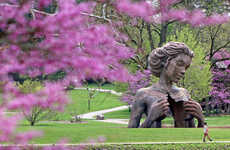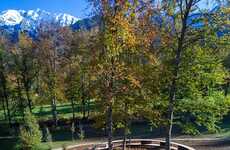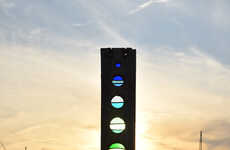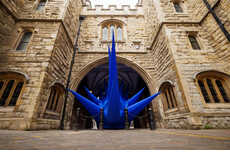
Nikolay Polissky's Gate of Perm is Inspired by the Russian Letter for 'P'
Meghan Young — December 1, 2011 — Art & Design
References: polissky.ru & thisiscolossal
The Gate of Perm installation is a stunning balance between chaos and order. Created out of hundreds of spruce logs, which are left as rough and rugged as if they were just plucked off a forest floor, this sculpture is arranged in such a way as to almost negate the natural materials used. Nevertheless, the overall result is a unique give and take vision between man and nature.
Created by Russian sculptor Nikolay Polissky, who is famous for creations cobbled together out of humble local materials, the Gate of Perm installation is located in the city of Perm, hence its name. Erected earlier this year, the Gate of Perm measures about 12 meters square and is shaped like the Russian letter for 'P,' which conveniently looks like a strong monument when realized off the page.
Created by Russian sculptor Nikolay Polissky, who is famous for creations cobbled together out of humble local materials, the Gate of Perm installation is located in the city of Perm, hence its name. Erected earlier this year, the Gate of Perm measures about 12 meters square and is shaped like the Russian letter for 'P,' which conveniently looks like a strong monument when realized off the page.
Trend Themes
1. Natural Material Installations - The use of natural materials in large-scale installations provides an opportunity for unique and visually striking art pieces.
2. Organic Design - Utilizing natural materials in non-traditional ways challenges the notion of what design can be and creates potential for disruptive innovation in the industry.
3. Eco-friendly Art - Sculptures made from locally-sourced, sustainable materials align with the growing demand for environmentally conscious art and offer potential for innovation in the eco-art industry.
Industry Implications
1. Art - Artists and curators can experiment with natural materials in their work and create unique pieces that challenge traditional notions of art.
2. Design - Designers can utilize natural materials in unconventional ways to create sustainable products and structures and provide a new perspective on design.
3. Sustainability - The use of locally-sourced, sustainable materials in art and design can promote eco-friendly practices and innovation in the sustainability industry.
3.2
Score
Popularity
Activity
Freshness
























